Press play or read on below.
After years of believing I had to use a gym to look good, build muscle, keep fit, and feel good. I now will never step foot inside one again. I hated the ego-driven environment. As a personal trainer, I saw clients struggle to make sessions and regard it as a chore.
Now don’t get me wrong, I’m not dissing the gym. But people can become confined to them because of false beliefs and culture, as I was. Back in 2016, after 10 years of using a gym, the frustrations had finally taken their toll. I decided to search for more accessible ways to build muscle and keep fit without a gym.
It was then that I stumbled upon a TRX Suspension Trainer. Now, before you hit me with “Is that it!” Hear me out…
Table Of Contents
The Five Life-Changing Benenfits
In this post, I’ll explain why I think it’s the best way to keep fit without a gym from a lifestyle and mental well-being perspective. In this post here, I explain the physical benefits of using a TRX. Like muscle gain, functional fitness etc.
Here are the five benefits I’ve discovered from using a TRX suspension trainer as a way to keep fit without a gym…
1. Mental Well-Being
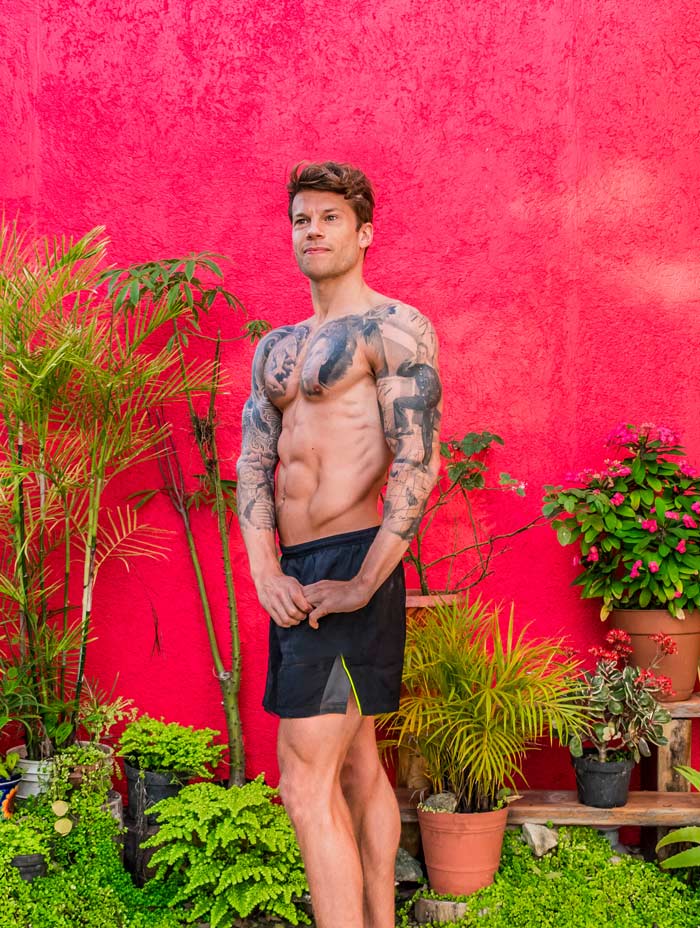
I believe a positive and strong mental well-being leads to better improvements and performance physically in the realms of fitness.
We compare ourselves to others. It’s human nature we can’t help it. In the gym I’d always be looking at others. Looking at the guy (or girl in some aspects) who’s more ripped than me, the guy who’s lifting more than me.
A guy who seems to know ten times more about fitness and nutrition than me. As the saying goes – there’s always a bigger fish and I always felt like Nemo. Itt left me deflated every time I was in there. Often I didn’t put as much effort in because the notion of “I’ll never be as good as him” or “what’s the point” would creep in.
I’d just tick boxes mentally, do bench, do squat, leave. My focus would slip in the gym from my goal, and onto other people and how I compare to them.
Now, it’s just me and my TRX suspension trainer at home or when travelling. Currently, that’s under the sunny skies of Tulum, Mexico. Quite the contrast to the neon lights of Gym Box in London.
And because just me and my TRX suspension trainer, I’m not looking at others, not looking at what they’re lifting, which piece of equipment is free, thinking would he mind if I use that, and how do I approach him to ask for that? Yadda-yadda-yadda.
The Turn Of The Tide
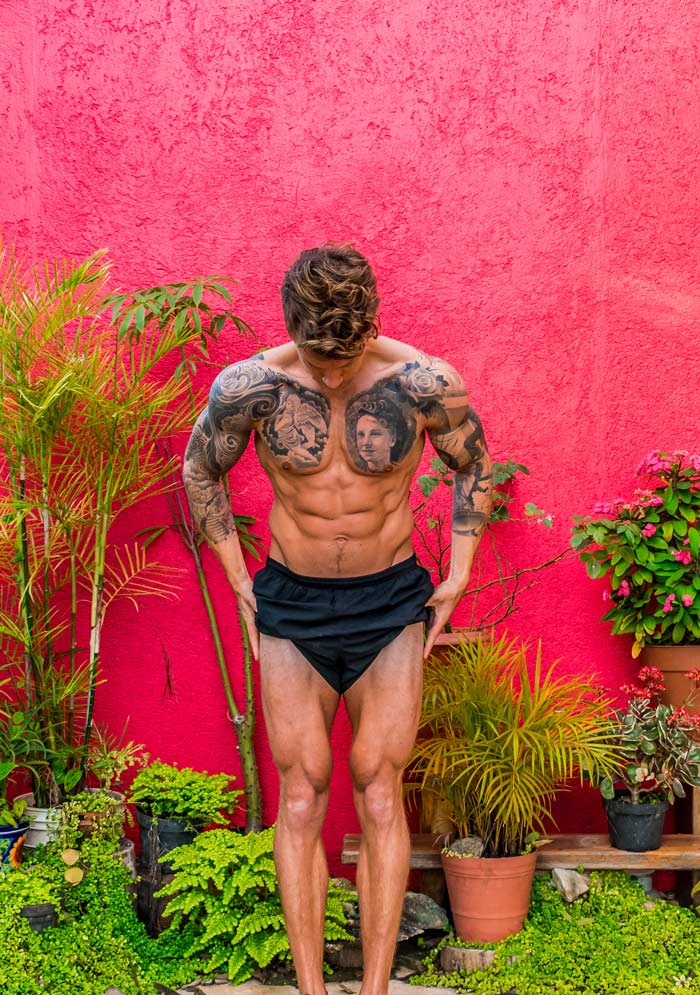
My focus is just on me, what I want to achieve and what I’m aiming for. I have my own personal space. I focus on the exercise and muscle I’m about to engage using the TRX. My mind-muscle connection is 10X greater from this.
Not once am I distracted by anything. The focus is on my body instead of the people around me. I feel the muscles being worked and mentally place my mind inside my muscles (Arnie’s great belief).
Granted living a nomad travel life adds to this feeling. But the same can be achieved at home. After every single workout, I feel great. Which is something I’ve rarely ever felt when bashing the gym. As my focus was always externally comparing myself to others.
2. Fitness Freedom
Getting the body you want can be confusing and frustrating. I should know. I used to have an unhealthy psychological reliance on gyms. I believed I HAD TO be in a gym all the time to achieve my fitness goals, and ultimately, feel myself.
It was limiting & confining. And it affected my mental well-being.
But discovering how to build lean muscle and transform my body using just a suspension trainer from home or when travelling, has spelt freedom for me. Along with a sense of empowerment.
If I was away from a gym, I would have thoughts of:
- Will I lose muscle mass?
- My arms may get smaller
- I won’t be able to train and thus won’t look good
- I need to get back to the gym straight away
- I’ll gain weight immediately
… The list goes on and on and on. It would constantly take up my mind space. Sounds almost borderline obsessive right? Now, I feel I can take fitness with me. This suspension trainer tool has become a salvation to me.
I don’t feel the same if I can’t exercise, I don’t feel myself. It affects me and the people around me. You could say it’s a healthy obsession, but I don’t believe it is if it limits your life.
Now, I have that healthy obsession, but without the limitations. It’s become an enjoyment rather than a chore that ‘I must do’.
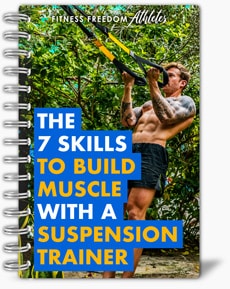
Get Your FREE Copy Of My ‘7 Skills To Build Muscle With A Suspension Trainer Handbook!’
Downloaded 70,000+ times! Just tell me where to send it:
3. Body Composition
Training with a TRX suspension trainer has improved my muscle development, body shape, flexibility, core development, and functional strength. More than using gym methods has. I wrote a post on the six benefits I’ve discovered in this area, here.
In a gym, I was confined to the robotic nature of it. I must tick the squat rack off, I must tick the bench press off, without really aligning my goal to the best method of achieving it.
The equipment, or more so the routine of using it, became my focus and I’d tend to lose track of my goals. For instance, my focus should have been on time under tension, the stretch of the muscle on the negative, the squeeze at the top of the positive phase, the angle of my movements, and the stability in my core.
Not on prioritising the use of a piece of gym equipment because I’d seen it used a lot on social media.
Refocusing For Greater Results
Training outside with mother nature or at home. I have no distractions, no one rushing me. I look at the TRX and think how and what do I want to train? And how can I use the TRX to achieve it?
My focus is then on the setup, the angle, my stance and finally the eccentric and concentric movement. The simple task of analysing the TRX and questioning it engages my brain and focus. The complete opposite of being a gym monkey.
4. Time And Money
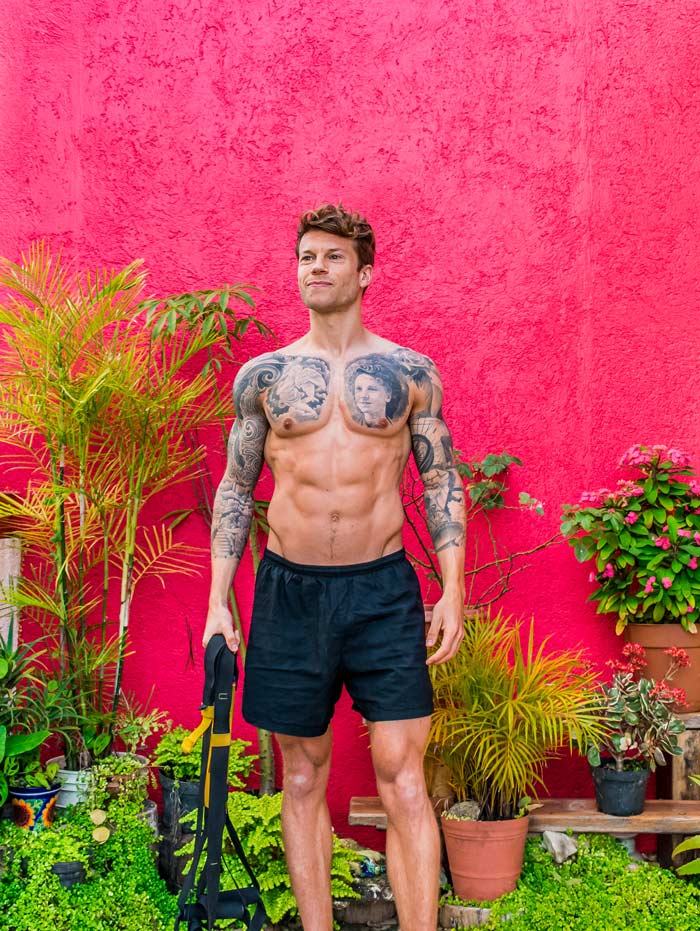
In London, the cheapest ‘useable’ gym is around £40 a month as I write this (2019). That’s £480 a year. I’ve been paying for a gym in London averaging £50 a month for ten years.
That’s £6000.
I could travel the world for 6 months comfortably with that. I now put my monthly gym money, which I’ve never had anyway, into a medium-risk investment account. Figure I’ll look at it in another ten years. This leads me to something more valuable than money, Time.
We’re ruled by time and mostly it’s on the same rules as others, 9 – 6 working. Before, after, and weekends are free time. The problem is, that free time is when people like to go to the gym.
I think I’ve wasted more time in my life waiting for a spare bench, squat rack, or dumbbell than I have waiting for anything else.
I even did a calculation on it. I reckon I spend 3 mins on average waiting for something or someone in the gym within a one-hour session. Trained on average 5 times a week. That’s 15mins a week, 780 mins a year, and 7800 mins in ten years….
130 hours I’ve spent waiting for a spare bench, squat rack or dumbbell. That’s 5 and a 1/2 days of my life. That’s crazy.
With a TRX suspension trainer at my disposal, I now not only save money, which is a huge help whilst living as a nomad, but also time.
I train whenever I want and in whatever space I want not waiting for anyone.
5. Fun And Enjoyment
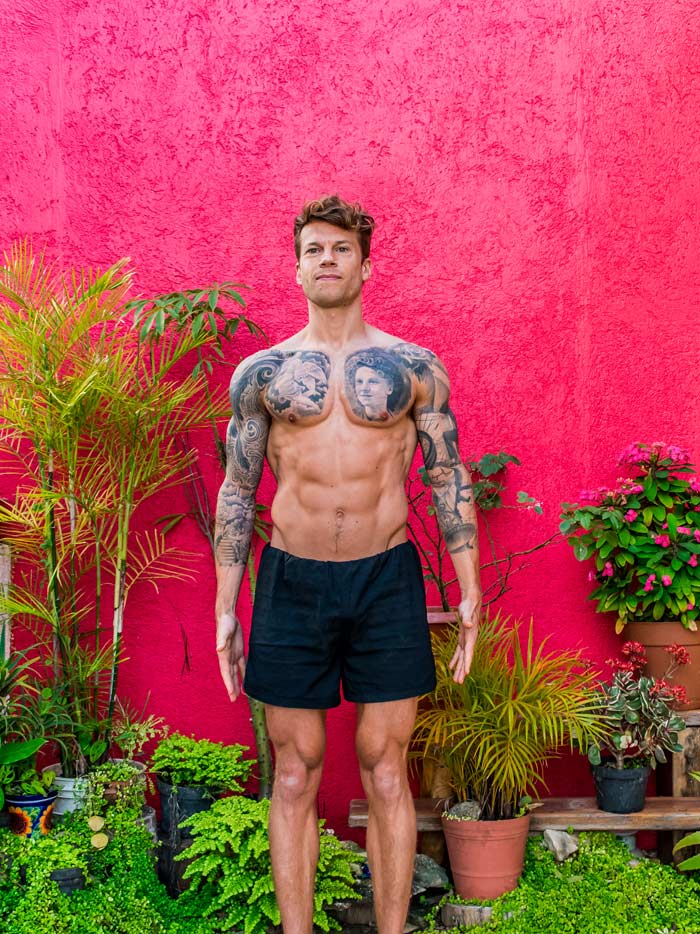
I would normally only change up my gym routine every 3 months. How exciting it was to go from a bench press to a dumbbell press. I’m being a bit of a hater here. But with a TRX suspension trainer, I’m always looking for new ways to exercise differently.
I get creative and it breaks the mould from the convention of gym routines that my body is so used to. It’s fun and challenging to see how you can change things up and I look forward to that challenge.
I look at ways to challenge strength for low reps with unusual angles and body positions. Compared to hypertrophy with high reps and angles focusing on big stretching, and tension in the muscles.
This has led to an increase in my functional strength. Stronger rotator cuffs and solid shoulder girdle. No hip or lower back pains. I’m more balanced across my shoulders and traps.
I’m not saying you can’t get this with gym training. But I do believe you naturally gain it with suspension training. As opposed to needing to train for it in a conventional gym environment.
In conclusion
Maybe a TRX suspension trainer could just be an added addition to help you out with the gym. Maybe it’ll change your life quite significantly, like it did for me. And you’ll find it the best way to keep fit without a gym.
Either way, let me know your thoughts on it in the comments.
Your TRX Suspension Trainer Body Transformation
If you have a suspension trainer there are 3 ways I can help:
1. Suspension Trainer Total Body Transformation Program (Beginner Level)
If you’re new to training or lack functional strength, this Program will teach you the ‘Muscle-Centric Technique’ to build lean muscle & transform your body in 8-weeks. (#1 Most Popular!)
Start Your Transformation Here »
2. Suspension Trainer Beach Body Program (Intermediate Level)
If you’re quite active but unhappy with your body shape, this 8-week Program gets you lean, fit, and beach-body ready!
3. Suspension Trainer Ultimate Physique Sculptor Program (Advanced Level)
If you’re a fitness enthusiast but you’ve plateaued, this 12-week Program re-sculpts your body for an aesthetic physique.
Rated 4.9 out of 5 from 100s of Reviews on Trust Pilot!
Unsure? Take the Body Transformation Quiz here and in less than 60 seconds, I’ll recommend the best fit for you!
Your Fitness Freedom Coach,
Coach Adam
Body Transformation Coach

Get Your FREE Copy Of My ‘7 Skills To Build Muscle With A Suspension Trainer Handbook!’
Downloaded 70,000+ times! Just tell me where to send it:

 I hope you enjoy this post. If you want my help to build lean muscle & transform your body using a TRX suspension trainer anywhere –
I hope you enjoy this post. If you want my help to build lean muscle & transform your body using a TRX suspension trainer anywhere – 


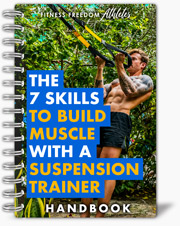
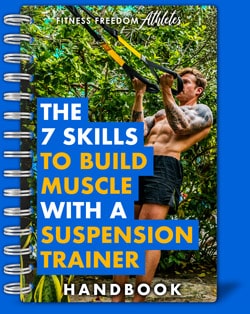

Love your content and suspension training! Got a knock off, unbranded system 2 or 3 years ago now and it is hands down the best piece of fitness equipment I have ever used, let alone owned.
I did notice during a lot of your videos you do a lot of partials. Not knocking on that specifically as they certainly have their use, but was wondering if you had a reason for why you do said partials (at least most I’ve seen you do) at the shortened end of the range of motion? Based on the current science the best hypertrophic stimulus occurs from tension in the lengthened position and even just stretching itself can cause growth as well, so long as it is done with sufficient tension/load.
Given that info, the first 1/3-1/2 of the movement should give the best stimulus (at least in theory, based on the scientific evidence available) I’m curious if you have experimented with doing those same partial reps but focusing on the lengthened portion rather than the shorter half?
Again, not saying the way I’ve seen yours done is bad (and in fact your forward facing pressing/skull-crusher type movements do seem to embrace this concept in your partials). Just curious if there was a specific reason or it was perhaps just a product of the nature of the pulling movements being hardest at that point, whereas the pressing movements it is easier to “sink in” to that deep stretch.
Overall I’m loving your content, especially the emphasis on the mind-muscle connection. I’ve seen a lot of people over the years state that this is only applicable to advanced people and newbies can’t “get it” which I’ve always believed was fundamentally flawed and should be the first focus for anyone getting into trying to build muscle- whether regular old bodyweight, weights, machines, suspension or any other form of exercise they are undertaking. If you teach that first and every movement is taken slow and used to “feel” for that deep stretch at the bottom and powerful contraction of the target muscle or muscle group at the top, then form will naturally follow. Ancient martial arts have emphasized this concept for hundreds of years, if not more, and it is always effective at building well balanced movement patterns, strength, power and efficiency.
Anyway this became rather long-winded haha. Keep doing the great work you do and if you haven’t tried the lengthened partials, consider giving it a go and see if it squeezes out a little extra gains. Would love to see a video or article on a direct comparison experiment of the two. Maybe a month or two of doing it each way and see what the gains look like after each cycle, could be fun to play around with. I look forward to seeing more from you!
Not long-winded at all. Really enjoyed reading that and really appreciate you taking the time to comment. Thank you. Right there with you on the mind-muscle connection, a double whammy for body and mind.
And agree on ‘full range of motion’ always too. I’m not sure which videos you’re talking about but if you link to them I can expand on why I was doing partials. The 2 most likely reasons I can think of the top of my head are:
1. Taking the muscle to complete failure across the 3 strength ranges and partials were at the end of the reps. Advanced workout/exercise video.
2. Coaching exercise movements where at a beginner teaching a full range of motion may be counterproductive. By instructing to contract the opposing muscle to lengthen the primary muscle along with the other teaching points, I’ve often found beginner level clients end up just hanging, resting and losing tension in the muscle, which is worse overall. By shortening the range of motion they are able to maintain constant tension throughout the set and not feel overwhelmed by multiple teaching points. Full range of motion with opposing muscle stretches is something I bring into play at an intermediate level and much more at an advanced level. This is purely my personal opinion and way of teaching – The classic scientist in the lab vs the practitioner in the field.
All the best with your training and fitness journey!